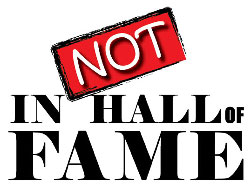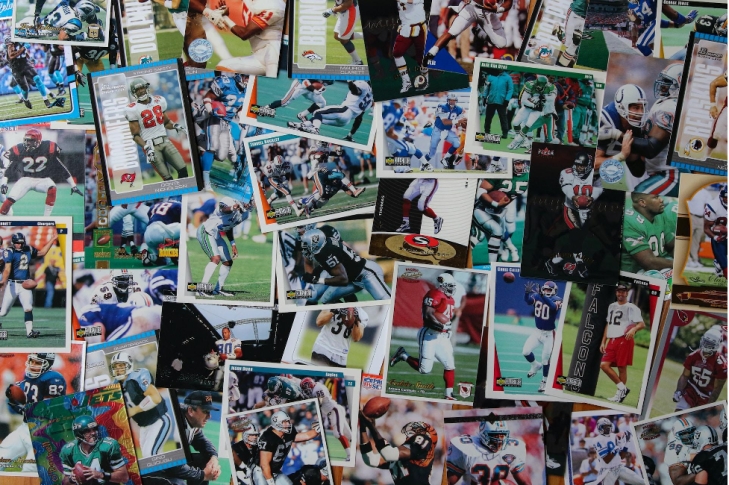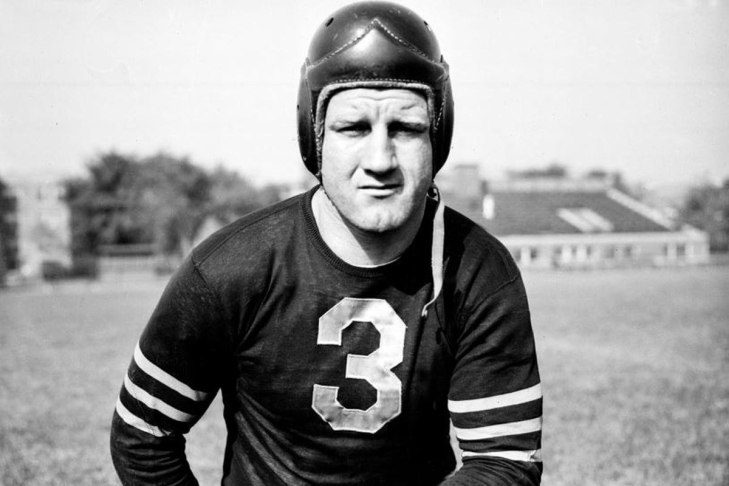
Committee Chairman
More Than a Game: The Cultural Impact of NFL Football
In the heartland of America, where autumn winds carry whispers of age-old rivalries, the National Football League (NFL) is more than just a game. It's a cultural spectacle, a binding fabric of society, reverberating through time with tales of heroism, fellowship, and the ceaseless pursuit of victory. Here, NFL football isn't merely a sport; it's a legacy carried through generations, a Sunday ritual, a topic of daily discourse.
The Social Glue
The NFL acts as a social adhesive, bringing together diverse groups under a common banner. Whether it's the communal exhilaration in a winning touchdown or the shared agony of defeat, these emotional roller-coasters cultivate a sense of belonging. This camaraderie is often most apparent in the allegiance to teams, with entities like the Dallas Cowboys not only representing a city but embodying a collective identity. The Dallas Cowboys odds of winning on any given Sunday, for instance, becomes a matter of civic pride and social conversation, intertwining the fate of a football team with the hopes of a community.
A Mirror to Society
The NFL has often mirrored societal changes and issues, becoming a stage where national dialogues unfold. Players taking a knee to protest racial injustice or the league's evolving stance on player safety amidst the growing number of concussions reflect broader societal concerns. Through these actions and reactions, the NFL serves as a microcosm of larger societal dynamics, shedding light on the evolving national narrative.
Economic Juggernaut
The financial impact of NFL football is undeniable. From ticket sales and merchandise to billion-dollar broadcasting deals, the sport is a financial powerhouse. The ripple effects extend to local economies, with game-day festivities fueling business for local bars, restaurants, and retail outlets. The financial symbiosis between the NFL, its cities, and the national economy is a testament to the sport's integral role in the economic landscape.
The Legacy of Competition
The competitive spirit that the NFL epitomizes is emblematic of the broader American ethos. The hard-fought battles on the gridiron echo the nation's values of perseverance, teamwork, and the relentless pursuit of excellence. The legacies created by iconic rivalries, momentous victories, and heart-wrenching defeats transcend the game, entering the realms of folklore and national identity.
Educational Catalyst
The NFL also plays a part in educational endeavors. Through scholarship programs and initiatives aimed at promoting physical fitness and discipline among the youth, the NFL contributes to the holistic development of individuals. Moreover, college football acts as a springboard for both athletic and academic opportunities, underlining the educational facet of the sport's cultural footprint.
Conclusion
As the final whistle echoes through the crisp autumn air, one can't help but reflect on the enthralling journey through the heartbeats of communities, the conscience of a nation, the bustling economy, the valor of competition, and the informative spirit of the game. The NFL is not merely a game but a narrative that encapsulates myriad facets of American life, each touchdown a page in the unfolding saga of a culture intertwined with pigskin. Through the cacophony of cheers, the highs and lows, the NFL continues to be a poignant emblem of America's cultural tapestry.
Do Kentucky Residents Prefer Basketball Over NFL?
Basketball and football command enthusiastic followings in Kentucky. While both sports have merit, one maintains a decisive edge in popularity according to fan participation, local traditions, and cultural influence.
A Close Look at Preferences
When it comes to sports, people in Kentucky often find themselves debating two major options: basketball and NFL. Local sports bars, community events, and even family gatherings turn into hotbeds of discussion. There's a belief that basketball runs in the blood of Kentuckians, but the NFL also has a significant presence.
Statistics Speak Volumes
According to data, attendance at college basketball games, particularly for teams like the Kentucky Wildcats, often surpasses local NFL game attendance. TV ratings also suggest a leaning towards basketball. However, it's essential to consider that Kentucky doesn't have an NFL team, which could potentially skew the numbers. Nonetheless, TV viewership and stadium attendance provide valuable insights.
The University of Kentucky Phenomenon
The role of the University of Kentucky in shaping preferences cannot be overstated. With a history that boasts multiple NCAA championships, the basketball program has created a community that closely follows the sport. Conversely, NFL events, while respected, don't offer the same sense of local identity.
Cultural Factors
Culture plays a significant role in the sports people choose to follow. In Kentucky, basketball is often more accessible. Kids grow up shooting hoops in their backyard. Schools prioritize basketball programs, and local heroes in the sport are common. In contrast, the infrastructure and support for aspiring NFL athletes are not as widespread.
Economic Considerations
Basketball games are generally more affordable to attend than NFL games, a fact that impacts preference. The cost of a basketball ticket, concessions, and memorabilia often total less than attending an NFL match, even when you account for the price of travel to a neighboring state for an NFL game.
Athletic Programs and Community Involvement
Athletic programs at both the school and college levels tend to favor basketball, offering more opportunities for scholarships and community engagement. Local organizations often sponsor basketball tournaments, fostering a sense of unity and local pride around the sport. The NFL, while not lacking in community programs, does not offer the same local appeal.
Media Influence
Local media coverage also sways preferences. Newspapers, sports channels, and even local news websites often give more space to basketball, discussing the ins and outs of upcoming games, player statistics, and season predictions. Coverage of the NFL is usually more generalized, focusing on teams from other states rather than local interest.
Social Aspects
The social setting around watching sports also differs between basketball and NFL. Watching a basketball game is often a more frequent, communal event. It's easier to catch a quick game at the local bar or at home with family and friends. NFL games, often longer and less frequent, require a different kind of commitment, perhaps contributing to a lesser degree of local preference.
The Impact of Merchandise
One can't overlook the influence of merchandise. Jerseys, basketballs, and other paraphernalia related to basketball are more common, easily available, and affordable. This likely contributes to a general preference for basketball over the NFL, even if it's a less-discussed factor.
Impact of Seasonality
While basketball and the NFL have different seasons, the timing of each could influence people's preferences. Basketball season includes the winter months, providing indoor entertainment when outdoor activities are limited. The NFL, predominantly a fall and early-winter sport, competes with various outdoor events and traditions in Kentucky, potentially affecting the number of dedicated viewers and attendees.
Role of Alumni and School Affiliations
Another contributing factor is the connection to educational institutions. Kentucky is home to several universities with strong basketball programs, which create a pipeline of dedicated fans who continue to support their teams long after graduation. Though the NFL has its fair share of fans who are loyal to specific teams due to college affiliations, the local ties created by universities like the University of Kentucky can significantly tip the scale in favor of basketball.
Accessibility and Grassroots Programs
Easy access to a sport can greatly affect its following. Basketball courts are a common sight in many communities in Kentucky, allowing for casual games and fostering an early interest in the sport. Many schools and local community centers run basketball programs for children, giving them a direct pathway to engage with the sport from a young age. This early and consistent exposure to basketball creates a predisposition toward the sport, which is less common with football, where the investment in equipment and facilities is considerably higher.
Corporate Sponsorships and Investment
Corporate involvement in sports can't be overlooked. Local and national companies often invest in basketball programs, tournaments, and events, perhaps due to the high levels of community engagement these programs offer. These sponsorships add a financial boost to the basketball ecosystem in Kentucky, providing funds for better facilities, training programs, and community events. The NFL also enjoys considerable corporate sponsorship but often at a national level, rather than targeted local involvement.
Sports Affinities: From Courts to Fields
Kentucky holds a unique position when it comes to the sports its residents enjoy. Both basketball and the NFL have significant followings, but basketball generally has a deeper emotional connection with the locals. Universities with storied basketball programs contribute to this preference. However, the recent rise in sports betting, exemplified by the increased usage of promotions like the BetMGM Kentucky bonus code, indicates an evolving engagement with both sports. So, while basketball remains entrenched in the state's culture, the NFL is making inroads. The current dynamic suggests a coexistence rather than an outright replacement.
Conclusion
Statistical data suggests that basketball has a strong foothold in Kentucky. The sport's community involvement and the state's collegiate success in basketball may account for this preference when compared to the NFL.
Miguel Cabrera Retires: The Hall of Fame Clock begins
An era has ended.
Miguel Cabrera played his last game yesterday, concluding the career of one of the best hitters of the last twenty years.
From Venezuela, Cabrera broke in with the Florida Marlins in 2003, where he immediately helped them with the World Series. A rising star who went to the next four All-Star Games, the frugal Marlins traded Cabrera to Detroit in 2008, where his game reached a new level.
An All-Star annually from 2010 to 2016, Cabrera won two Home Run Titles, four Batting Titles, two OPS Titles, and two MVPs. Cabrera also won seven Silver Sluggers.
He retires with 511 Home Runs, 3,174 Hits and a lifetime Slash Line of .306/.382/.518.
Cabrera will be eligible for the Baseball Hall of Fame in 2029, and should be a first ballot entry.
We here at Notinhalloffame.com would like to wish Miguel Cabrera the best in his post-playing career.
The Pro Football Hall of Fame Revisited Project: 1949 FINAL VOTE
Here we are! Again!!
If you have been following our Pro Football Hall of Fame Revisited Project, you know that we have asked the rhetorical question…what if the PFHOF began in January of 1946?
After soliciting and obtaining a passionate group of football fans and historians, we sent out a ballot for a Preliminary Vote, which we asked each voter to give us 25 names as their semi-finalists, and 5 in the Senior Pool. Following that, we asked the group to vote for their 15 Finalists in the Modern Era, and 3 in the Senior Category. The final stage was to vote for their 5 Modern Era inductees and 1 Senior inductee.
This is the result of the fourth official class;
Below, are the final results of this project based on 32 votes:
This is for the “Modern Era”
*Bold indicates they have been elected to the Pro Football Hall of Fame Revisited Class of 1949:
|
Player |
Year of Eligibility |
Vote Total |
|
Bronko Nagurski FB-LB-T |
1 |
28 |
|
Johnny Blood TB-HB-WB-BB-DB |
6 |
14 |
|
Danny Fortmann G-LB |
1 |
14 |
|
Lavvie Dilweg E |
10 |
13 |
|
Link Lyman T |
10 |
13 |
|
Vern Lewellen B |
12 |
12 |
|
Cliff Battles TB-FB-WB-DB |
7 |
12 |
|
Clark Hinkle FB-LB-HB-DB |
3 |
12 |
|
Joe Guyon WB-TB-BB-FB |
17 |
10 |
|
Dutch Sternaman HB-QB-FB |
17 |
9 |
|
Jimmy Conselman BB-TB-HB-E |
15 |
8 |
|
Mike Michalske G-T-LB-BB |
7 |
7 |
|
Ray Flaherty E-DB |
8 |
3 |
|
Ox Emerson G-C |
6 |
3 |
|
Tuffy Leemans FB-TB-DB-QB |
1 |
3 |
This is for the “Senior Era”
*Bold indicates they have been elected to the Pro Football Hall of Fame Revisited Class of 1949:
|
Ted Nesser |
N/A |
18 |
|
Blondy Wallce |
N/A |
8 |
|
Henry McDonald |
N/A |
3 |
|
1 person abstained |
About the 1949 Inductees:
Bronko Nagurski FB-LB-T, CHI 1930-37 & 1943: Inducted in 1949 on the 1st Ballot. Was inducted into the actual Pro Football Hall of Fame in 1963.
A powerful runner on offense, and punishing hitter on defense, Bronko Nagurski was a nine-year veteran of the NFL, all with the Chicago Bears. Nagurski did nothing fancy, nor did he need to do. Rushing for over 4,000 Yards, Nagurski took Chicago to three NFL Championships (1932, 1933 & 1943), the latter of which occurring after a five-year absence when he was a successful professional wrestler. Nagurski’s induction makes him the first person to enter on his first true year of eligibility in this project.
Johnny “Blood” McNally TB-HB-WB-BB-DB, MIL 1925, DUL 1926-27, POT 1928, GNB 1929-33 & 1935-36 & PIT 1934 & 1937-38: Inducted in 1949 on his 4th Ballot (technically his 6th year of eligibility). Was inducted into the actual Pro Football Hall of Fame in 1963.
Is there a better nickname than “Blood”? It was so good, that he was mostly known as “Johnny Blood”. From Notre Dame, McNally did it all, though excelled mostly at Halfback, and was the blueprint to what offensive skill players would later become. While McNally played for five different teams, it was the Green Bay Packers where he was mostly known for, having won four NFL Championships there (1929, 1930, 1931 & 1936).
Danny Fortmann G-LB, CHI 1936-4: Inducted in 1949 on the 1rd Ballot. Was inducted into the actual Pro Football Hall of Fame in 1965.
Danny Fortmann was about as good a blocker as there was. Playing for the Chicago Bears for the entirety of his career, Fortmann entered the NFL at the tender age of 20, but became a leader almost instantly. Fortmann called the signals for the lineman, and on defense, he was able to deduce his opponents plays, which often led to one of his punishing tackles. He would help lead Chicago win three NFL Championships (1940, 1941 & 1943), and individually was chosen for six consecutive First Team All-Pros (1938-43).
Lavvie Dilweg E, MIL 1926, GNB 1927-34: Inducted in 1949 on his 10th Ballot (technically his 12th year of eligibility). Was never inducted into the Pro Football Hall of Fame.
Lavvie Dilweg was a star at Marquette, and he would keep his athletic talents in the state of Wisconsin, as he signed with the Milwaukee Badgers in 1926. The stay in Milwaukee was short-lived as the team folded that year. He would travel north and join the Green Bay Packers in 1927, an organization he played for until 1934. Dilweg was considered to be one of the most complete players of his era, a time frame in which the football players performed at both ends, and his peers viewed him as one of the top tacklers and blockers of his day. Stats back then were not well kept, but he was also a decent offensive weapon, and overall, he helped the Green Bay Packers win three consecutive NFL Championships (1929, 1930 & 1931).
Link Lyman T, CAN 1922-23 & 1925, CLE 1924, FRN 1925, CHI 1926-34: Inducted in 1949 on his 4rd Ballot (technically his 10th year of eligibility). Was inducted into the actual Pro Football Hall of Fame in 1964.
William Roy “Link” Lyman was known for his pioneering style of shifting on defense, which helped enable the former Nebraska Cornhusker to carve out an 11-year career in the NFL. One of the first true “Defensive Quarterbacks” of the game, Lyman signed with the Canton Bulldogs in 1922, and he helped them win that year’s title and the one after. He was one of many players to be sold to the Cleveland franchise, where he won a third Championship in as many seasons. Lyman joined the Chicago Bears in 1926, where he played until 1934. As a Bear, the Tackle won his fourth NFL Championship (1933), and was twice a First Team All-Pro.
Ted Nesser: Inducted in 1949 on the 4th Senior Ballot. Was never inducted into the Pro Football Hall of Fame.
Ted Nesser was a member of the first great family of football, the seven Nesser brothers who all starred on the gridiron. Never playing college ball, or even finishing high school, Ted was considered the toughest of the brood, and though he played professionally for many teams, he is primarily associated with the Columbus Panhandles of the Ohio League, and later the early NFL. He also won three Ohio League Titles with Massillon.





